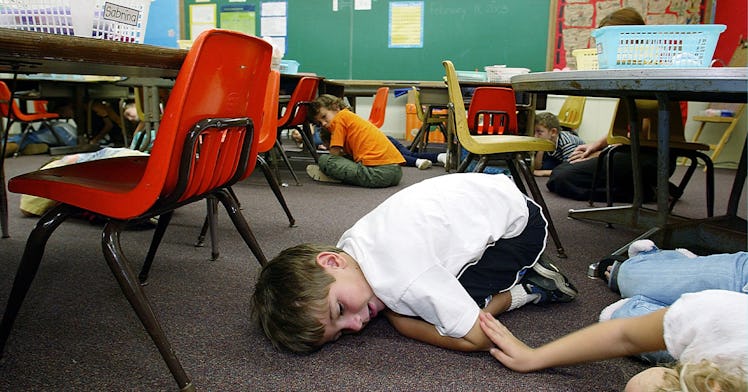The AAP Says Active Shooter Drills Are Bad For Kids. Let’s Cancel Them
High-intensity active shooter drills aren't helping kids. It's time to cancel them.

Now that schools are reopening after closing last March due to the COVID-19 pandemic, educators have to worry about school shootings again. After all, since students began attending school from home, school shootings plummeted, with no kids dying from mass shootings in school but also at risk of contracting a deadly virus and dying from that. Well, now, kids might be at risk of both in schools — and the American Academy of Pediatrics have released a new policy statement giving recommendations to schools to stop doing high-intensity active shooter drills that involve fake weapons, gunfire, or blanks, fake blood or gunshot wounds, aggressive acting, and other simulations that would make students think the drill is a real life shooting.
According to the AAP, high-intensity active shooter drills, which often lead students and staff to believe that they are responding to an actual live shooter event in their school, are widely utilized, yet there’s little evidence that they’re actually effective in teaching children survival skills or getting a drill done safely. In fact, the majority of these drills have tons of unintended negative consequences, and can traumatize kids and teachers, causing long-term psychological harm.
Instead, the AAP recommends, schools should obviously still run shooter drills, but only in the same way that they run fire drills. A regular old fire drill is done calmly, without fake fires, without teachers getting their limbs burnt off, etc. An active shooter drill, per the AAP, should be the same — to limit psychological and emotional harm from the exercises and also so teachers and students can still go through the motions of safety if a shooter were to enter the school building.
The AAP also recommended that, rather than responding to the possibility of mass casualty events in schools via drills, that schools invest in mental health services, social-emotional learning, teacher training, and positive school climate. Of course, in a country where only 40 percent of schools have a full-time nurse, and many schools don’t have a mental health counselor, these recommendations make a lot of sense, but might not be attainable, given education budgets being slashed around the country due to COVID-19. Still, schools can start by getting rid of shooter drills that include teachers getting shot by rubber bullets — and doing regular, calm drills.